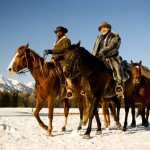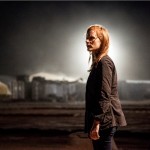Original Screenplay – Oscars 2013
The nominated original scripts bring together disparate stories told in very different ways. A quick analysis reveals common structure elements regardless of length and story yet… convention and formula is thrown out the window making these scripts stand out. They are: Amour, Django Unchained, Flight, Moonrise Kingdom, and Zero Dark Thirty.
The scripts are analyzed from a structural point of view, using the Blake Snyder Beat Sheet as reference, as are the Adapted Screenplays.
NOTE: Studios, producers and writers will often post screenplays for public viewing for a limited time. If the links on this page to the screenplay you are interested in is not functional you may contact A Film Look to request a copy of the screenplay, free of charge and only for legitimate educational purposes. All copyrights are of their respective owners. Additional screenplays upon request.
AMOUR
written by Michael Haneke
 The story of Anne and Georges Laurent, an elderly musician couple facing the end of their lives, is the shortest of all scripts nominated, at a skimpy 67 pages. The movie runs for 125 minutes. Catalyst should be at page 7, decision at page 15, b-story around page 18 and midpoint at page 33.
The story of Anne and Georges Laurent, an elderly musician couple facing the end of their lives, is the shortest of all scripts nominated, at a skimpy 67 pages. The movie runs for 125 minutes. Catalyst should be at page 7, decision at page 15, b-story around page 18 and midpoint at page 33.
Catalyst: Anne is unresponsive at breakfast (p. 7).
Decision / B-Story: On page 14 we learn about a life changing decision that was made off script, as Georges explains that an operation that Anne was reluctant to undergo went wrong (“It’s one of the 5% that go wrong.”). Anne suffered a stroke that has left her semi paralyzed and dependent on Georges. The true decision comes on page 18, when Anne asks Georges not to take her ever back to the hospital.
While outwardly, the story is about an elderly couple facing the end of their lives, the movie is about the confrontation with this reality as it affects the relationship between them, sometimes in anger, sometimes in caring love. It can almost be said that the overall story is not really “A”, and that it is a disservice to call “B” the emotional story played out by Anne and Georges, starting at page 18 with her request not to go back to a hospital.
Midpoint: The Soloist, a former pupil of the Laurents (and who in the script is undefined as to gender and specialty) visits the Laurents and performs for Anne as per her request.
Line: “Imagination and reality have little in common.” – Anne Laurent
Poignant and loving, this script in its almost unconventional structure clearly has an extraordinary role written for the Anne character. I have not seen this movie as of yet, but can understand how, if performed nearly as written, Emmanuelle Riva in the role of Anne could be nominated. After page 41 she has no coherent lines, only emotional utterances and expressions that convey all that needs to be said.
The underlying message about euthanasia and suicide at the end of a loving life is strong and merits controversy and a discussion that has not yet occurred, perhaps because of the movie’s limited release (64 theaters at its widest, so far), and the fact that it is in French.
Amour SCREENPLAY (May not be available after Feb. 24th).
———————————————————–
DJANGO UNCHAINED
written by Quentin Tarantino
 This story is about the rescue of a damsel in distress by a savior prince. It happens to be set in the antebellum South and uses slavery and its ugliness as the obstacles for the prince, Django. A long script indeed (168 pages – movie run time 165 minutes) but eminently readable. Following Blake Snyder’s beat sheet there should be a catalyst on page 18, story driving decision about page 38, B-story on page 45, and midpoint at page 84.
This story is about the rescue of a damsel in distress by a savior prince. It happens to be set in the antebellum South and uses slavery and its ugliness as the obstacles for the prince, Django. A long script indeed (168 pages – movie run time 165 minutes) but eminently readable. Following Blake Snyder’s beat sheet there should be a catalyst on page 18, story driving decision about page 38, B-story on page 45, and midpoint at page 84.
Catalyst: Dr. King Schultz reveals himself as a successful, perhaps almost rash, bounty hunter and shoots the sheriff (p. 17). Django is shocked, shocked.
Decision: As a complex intertwined story, Tarantino style, there are two major decisions involved that reveal character. The first one is by Django, when he decides to shoot the Brittle brothers without waiting for Dr. Schultz (p. 32). The second one is by Dr. Schultz, who decides to help Django in his quest to save his wife, Brunhilda (p. 45-46), and sets up the B-Story, right at the proportionate Beat Sheet mark. The first decision is rash, the second ponderated.
Midpoint: Django and Schultz ride into Candyland, Dr. Schultz confirms Brunhilda is there (p. 82) – Their first event at the plantation is the death by dog mauling of D’Artagnan, the runaway Mandingo (p. 84-89).
Line: “…what’s the point of havin’ a n***** speaks German if you can’t wheel ’em out when you have a German guest?” – Calvin Candie
The script is excellent, full of imagery and prose, well defined characters with distinctive dialogue voices and fun interventions. Deserves the nomination, and the Golden Globe win.
Favorite thing in the movie, not in the script:
Dr. Schultz’s carriage with the giant tooth.
Things in the script, not in the movie:
Even more brutal depictions of slavery, including gang rapes, killing of slaves for fun and sport, and random cruelty.
Brunhilda’s first (kinder) master and him losing her at a poker game against Calvin Candie.
The weakness of the script as a contender is that the movie deviates from it in major ways. The changes from script to movie actually made the movie somewhat more cartoonish (despite the fact that I did like the giant tooth). A revealing transformation for Django, which is his eventual mastery of horse riding is also omitted. In certain ways the script is better than the movie, i.e., less cartoonish, more to the point on the horrors of slavery, and with a greater character transformation. But the movie is the final product.
Django Unchained SCREENPLAY is no longer available for download.
———————————————————–
FLIGHT
written by John Gatins
In Flight we are presented with the story of Capt. Whip Whitaker, gripped by the self denial of addiction as he wonders to himself who is this national hero that outmaneuvered a catastrophic plane crash and that everyone is talking about. 
The script’s length is 149 pages (film clocks in at 139 minutes), so catalyst should be at page 16, decision / b-story page 33 to 40 and midpoint at page 74. However, it is not quite structured that way. As catalyst, the event outside of the protagonist’s control that starts the story, the plane’s malfunction clearly is it. This occurs on page 25. The next 15 pages are the extremely well written scenes of the crash, a movie moment indeed, but which again push the decision moment by the protagonist further into the body of the movie. So, we have to add approximately 10 to 15 pages to the standard beat sheet to find the turning points and other elements of structure.
Catalyst: The plane suddenly pitches sideways, Whip jolts awake (p. 25).
Decision/B-Story: Capt. Whitaker decides to go sober and refuses the drugs and drinks his friend Harling Mays offers to him in the hospital room (p. 51). This is the beginning of Whip’s struggle, as before he was complacent in his lifestyle. To accompany him in this struggle with himself he is presented with Nicole, the recovering addict, as a b-story element (p. 53).
Midpoint: If structure were true to page count, midpoint would be where Captain Whitaker sits at a hotel bar, after being told about the tox report, and orders an orange juice. On TV, his black box recorded voice plays on Piers Morgan’s show and Whip hears himself telling Margaret, the flight attendant, to say goodbye to her son. He then asks the bartender for a double shot of Stoli (p. 73). That this is the midpoint in fact is made clearer twelve pages later (p. 83) when his criminal defense lawyer, Hugh Lang, takes Whip out to the crash site. After taking in the magnitude of his heroic feat, he declares to Lang: “I’ll stop. I can stop. I told you I can stop. I won’t drink.” (p. 85). From there, it all goes downhill.
Line: “You’re a stupid f****r if you don’t believe in God” – Gaunt Young Man
The difficulty of this story is in the setup and catalyst. The plane’s malfunction and Capt. Whitaker’s feat is important, but it seems to overwhelm the intended story and the script structure. This whipsawed structure has consequences on the movie itself. Upon first screening, there were issues that seemed unresolved and, despite it being a great contribution to the genre of addiction movies (read more about that here), in the end the movie itself does not seem to convey a clear message and intent.
Flight SCREENPLAY (May not be available after Feb. 24th).
Flight has also been nominated for Best Original Screenplay by the Writers Guild of America.
———————————————————–
MOONRISE KINGDOM
written by Wes Anderson
 A story about first love between two kids that feel alienated from their families and escape to create a new, albeit knowingly temporary, world for themselves. She expects it to last ten days; he knows it won’t even last that long. Yet at the end, despite their real getaway escape camp having been obliterated by forces of nature, they are able to keep it forever to themselves as a mythical kingdom from a fantastic story. Stories she loves to steal and read, stories he enjoys to listen to.
A story about first love between two kids that feel alienated from their families and escape to create a new, albeit knowingly temporary, world for themselves. She expects it to last ten days; he knows it won’t even last that long. Yet at the end, despite their real getaway escape camp having been obliterated by forces of nature, they are able to keep it forever to themselves as a mythical kingdom from a fantastic story. Stories she loves to steal and read, stories he enjoys to listen to.
The script is standard length, 105 pages, the movie runs for 93 minutes. Some omitted scenes in the script possibly would have added two or more pages to the script. It is an easy and enjoyable read, and the movie follows the script very closely. A beautifully illustrated version of the script has been posted and makes for a fun read. You can see there how closely the movie follows the script. Beat sheet markers should be: catalyst P. 11; plot point 1 (decision) at p.23 and B-Story at p. 28; midpoint at p. 52.
Catalyst: unbeknownst to Sam Shakusky, his foster parents decide to hand him back over to Social Services; Captain Sharp and Scout Master Ward are shocked to find out Sam’s an orphan. (p.10-11). The situation is thus set that an orphan child is lost in the woods, but we don’t know what will happen once he is found.
Decision / B-Story: Suzy asks Sam to write to her. (p. 21), and they plot to escape together (not shown at this point). Once their escapade is under way, they need to assess the reality of their situation, so they check what they have in common and their emotions for each other (B-Story, pp. 27-29)
Midpoint: Suzy and Sam set up camp at The Cove (p. 49-54).
Line: “Even smart kids sometimes stick their fingers in electrical sockets” – Captain Sharp
This script is a true contender in its category and has very good chance at besting Tarantino’s–except for the fact that Django U may have been seen by more voters. Full disclosure: this is my favorite film of the year.
Moonrise Kingdom SCREENPLAY is no longer available for download.
Moonrise Kingdom has also been nominated for Best Original Screenplay by the Writers Guild of America.
———————————————————–
ZERO DARK THIRTY
written by Mark Boal
 The film makers claim this is the reported story of the hunt and killing of Osama Bin Laden, suggesting insider knowledge and investigative reporting brought to film. This claim has generated controversy and you can read about it here and here. As a movie, though, it still requires all structural elements to work, and it does. Despite the length of the movie (157 min.) the script is conventional length, 110 pages and a bit. Catalyst should be around page 12, break into two / b-story at pages 25 and 30, and mid point at page 55.
The film makers claim this is the reported story of the hunt and killing of Osama Bin Laden, suggesting insider knowledge and investigative reporting brought to film. This claim has generated controversy and you can read about it here and here. As a movie, though, it still requires all structural elements to work, and it does. Despite the length of the movie (157 min.) the script is conventional length, 110 pages and a bit. Catalyst should be around page 12, break into two / b-story at pages 25 and 30, and mid point at page 55.
Catalyst: Washington informs the Pakistani CIA station that Abu Faraj is now number three in Al-Qaeda (p. 11).
Decision: Maya believes a man named Abu Ahmed may be the courier for (and key lead to finding) Bin Laden, packs her bags to personally interview a prisoner in a remote black site to confirm this information (p 25).
B-Story: It is hard to identify a conventional emotional story in this film. Perhaps because of the film makers intent regarding filmed reporting as a “new genre”, the emotional inner life connection between characters is not at play. The b-story instead seems to be the inner struggle by the protagonist, Maya, as she goes from naïve rookie to hardened operative; from routine hard work into passionate obsession. If that were the true b-story, the interrogation of a new prisoner by her, where she mimics tactics from the first torture scene in the movie would be showing us how she has transformed into a torturer herself (p. 30). Right after this scene, Act Two clearly starts with the capture of Faraj. Shortly after we find the emotional impact of torture on Maya, as she retches out of sight of the tortured Faraj. The debate within the movie regarding torture, its effectiveness or not, and its impact on both the tortured and the torturers is thus played out through the emotions of Maya.
Midpoint: Maya thinks Abu Ahmed is alive and that his real name is Ibrahim Sayeed. The investigation is reopened (p. 54).
Line: “To big breaks and the little people that make them happen.” – Jessica
The contrived controversy surrounding this film detracts from its merits. It is well structured, conventional and effective, yet it suffers “second act fatigue” in the script as well as the movie itself, which faithfully follows the script.
Zero Dark Thirty SCREENPLAY is no longer available for download.
Zero Dark Thirty has also been nominated for Best Original Screenplay by the Writers Guild of America.
———————————————————–
The other nominees from the WGA are Looper,by Rian Johnson and The Master, by Paul Thomas Anderson (no longer available for download).
CJ Rangel – February 2013
